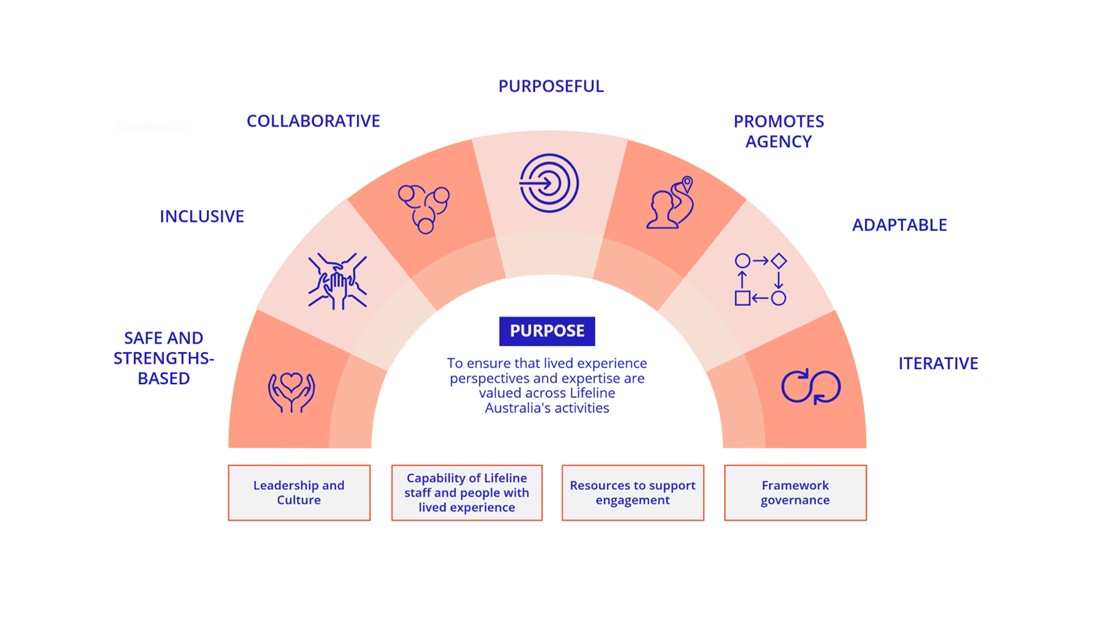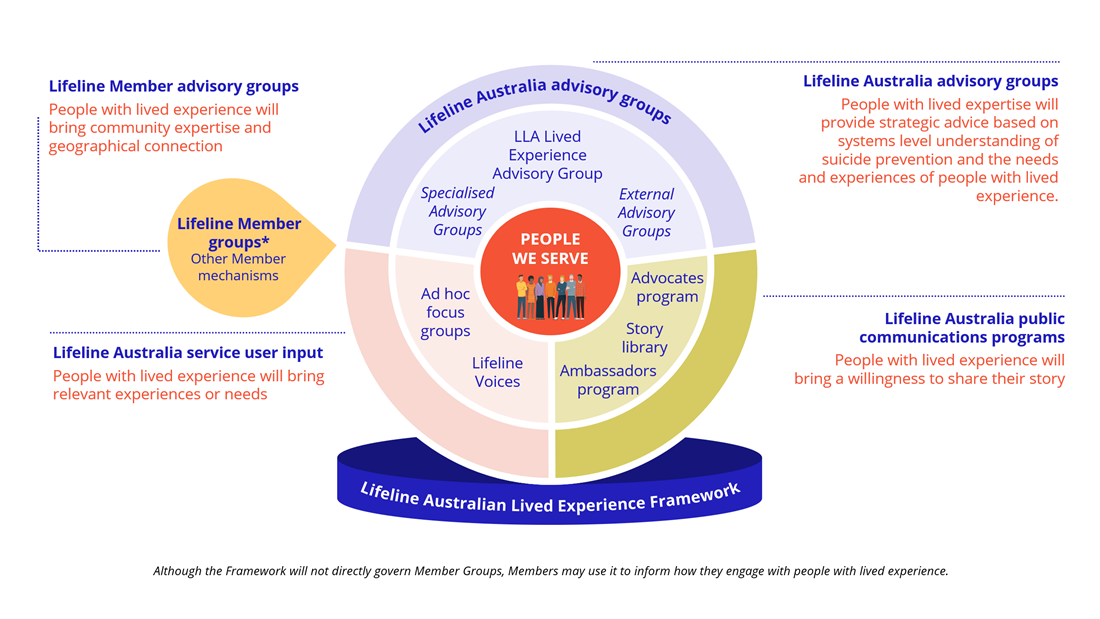Lived experience engagement
Our purpose is to ensure that lived experience perspectives and expertise are valued across Lifeline Australia’s activities.
Lifeline recognises the immense value the involvement of people with lived experience brings to our organisation and the work we do. We are committed to bringing in and incorporating the voices of people with lived experience to enhance outcomes for people seeking our services.
In June 2025 we launched a Lived Experience Framework to underpin our work. The co-development of a Lived Experience Framework is an important step to document this commitment to ensure all involved have a consistently positive experience across a range of engagement mechanisms.
The Framework aims to ensure a consistent, positive experience for participants and staff in all lived experience engagements, valuing lived experience and integrating it into Lifeline Australia’s activities. It will serve as the overall approach to all current lived experience mechanisms, and any new ones created in the future.

This section describes the key elements of the Lifeline Australia Lived Experience Framework diagram.
The central purpose of the framework, displayed in an arch shape, is: "To ensure that lived experience perspectives and expertise are valued across Lifeline Australia's activities."
These elements support the framework and are shown below the arch of principles:
The purpose of the Framework was developed through in-depth consultations and co-development sessions with a range of stakeholders, including people with lived experience who currently engage with Lifeline. The Lived Experience Framework is intended to ensure:
For more information, you can read an overview of the Framework here.
New and existing ways of working with lived experience will continue and will be guided by the Framework to ensure consistency and adherence to its principles.
We will enhance our engagements through a distributed model that embeds lived experience throughout the organisation. The Framework will ensure we understand where each mechanism adds value, provide support for groups to complement each other, and ensure strong communications and governance.

This diagram illustrates various ways people with lived experience engage with Lifeline, all connected to the overarching Lifeline Australian Lived Experience Framework.
At the very center of the diagram are 'people we (Lifeline Australia) serve', representing the individuals whose lived experiences are central to Lifeline's work.
The diagram shows a circular structure around 'people we serve', divided into three main categories of engagement mechanisms, each with specific examples:
Description: People with lived expertise will provide strategic advice based on systems-level understanding of suicide prevention and the needs and experiences of people with lived experience.
Description: People with lived experience will bring a willingness to share their story.
Description: People with lived experience will bring relevant experiences or needs.
To the left of the main circular diagram, there's a separate section for:
Description: People with lived experience will bring community expertise and geographical connection.
Underpinning all these engagement mechanisms is the 'Lifeline Australian Lived Experience Framework', shown as a base supporting the entire structure.
Although the Framework will not directly govern Member Groups, Members may use it to inform how they engage with people with lived experience.
Find out more about our Lived Experience Advisory Group, who provide lived experience guidance to Lifeline. This group supports the design, implementation, and evaluation of Lifeline Australia’s policy, research, and practice through respectful and collaborative engagement.
Lifeline Voices is an initiative where people with different lived experiences can share feedback and stories to help us improve Lifeline’s support services. By adding your voice, you can help us shape more compassionate, effective supports for everyone who needs them – now, and in the future.
If you're interested in joining, you can find out more here.
Holding on to Hope a podcast is where real people share their stories of personal lived experience of suicidality, offering hope and inspiration to others.